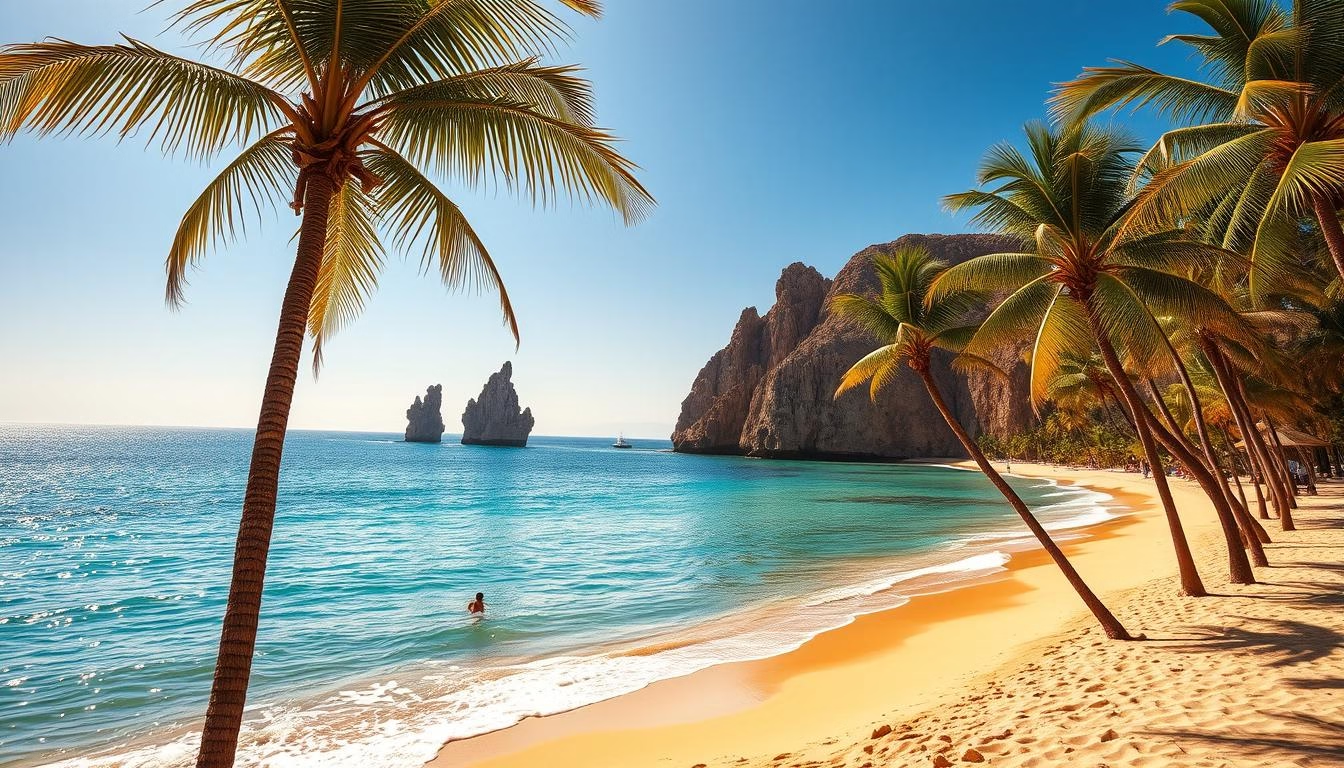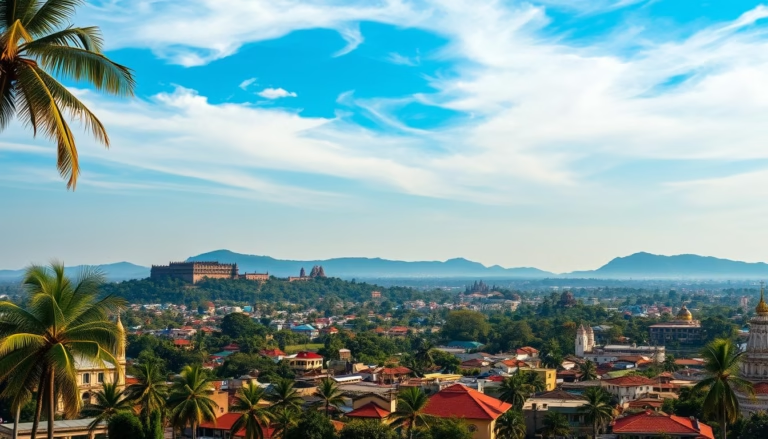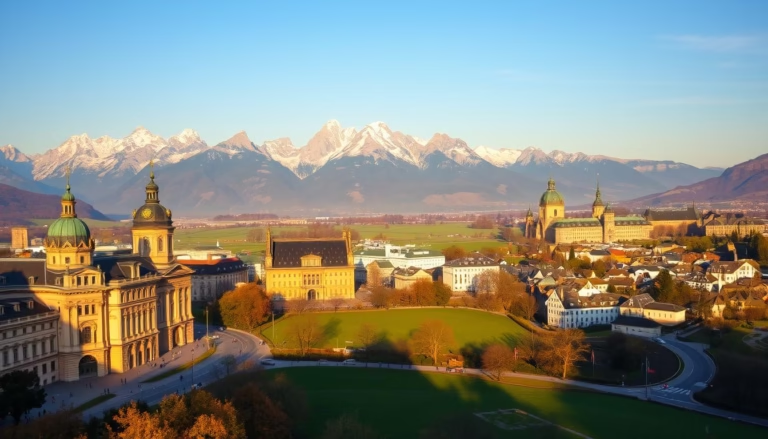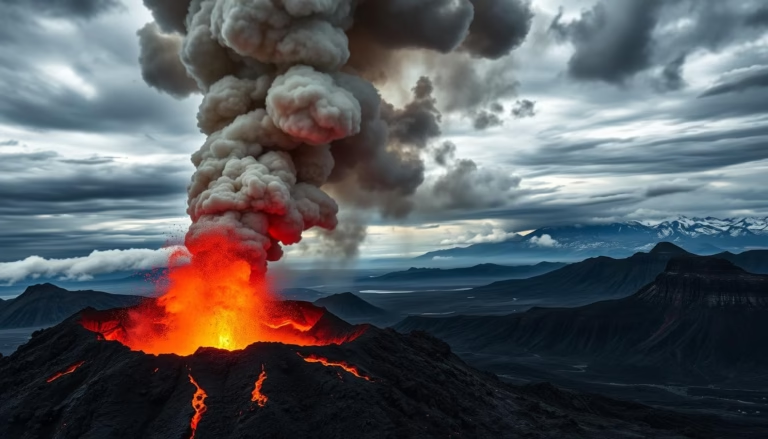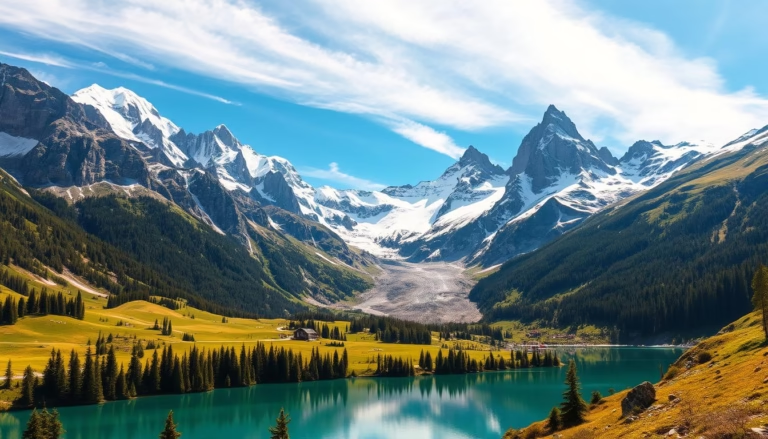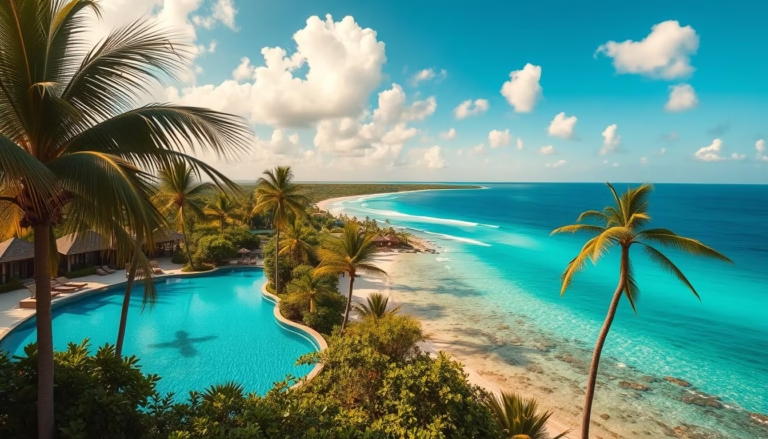Top Vacation Spots in Mexico: Beaches, Culture & More
Mexico dazzles travelers with its endless variety. From golden coastlines to misty jungles, this country blends natural beauty with rich cultural heritage. Its shores stretch across three distinct bodies of water—the Caribbean, Gulf of Mexico, and Pacific Ocean—each offering unique coastal gems and sun-soaked adventures.
Beyond the beaches, Mexico’s heartland reveals colonial cities steeped in history. Wander cobblestone streets lined with colorful architecture or explore ancient pyramids whispering tales of Mayan and Aztec civilizations. The Yucatán Peninsula’s cenotes and Oaxaca’s artisan markets add layers of discovery for curious explorers.
Food lovers rejoice here too. Regional dishes like mole and fresh ceviche highlight Mexico’s culinary diversity. Whether you crave relaxation on powdery sands or immersive cultural experiences, narrowing down your itinerary might be the toughest part. For inspiration, check out these most beautiful places to visit in.
Key Takeaways
- Mexico’s coastlines span three major bodies of water, each with distinct beach experiences
- Colonial cities and archaeological sites offer deep cultural immersion
- Diverse landscapes include jungles, mountains, and crystal-clear cenotes
- Regional cuisine provides authentic culinary adventures
- Balancing beach relaxation with inland exploration creates ideal itineraries
Introduction to Mexico’s Diverse Destinations
Travelers find endless possibilities where desert sunsets meet jungle waterfalls and cobblestone streets echo with mariachi melodies. This country’s magic lies in its ability to surprise visitors—one day you’re swimming in turquoise cenotes, the next you’re savoring handmade tortillas at a family-run fondita.
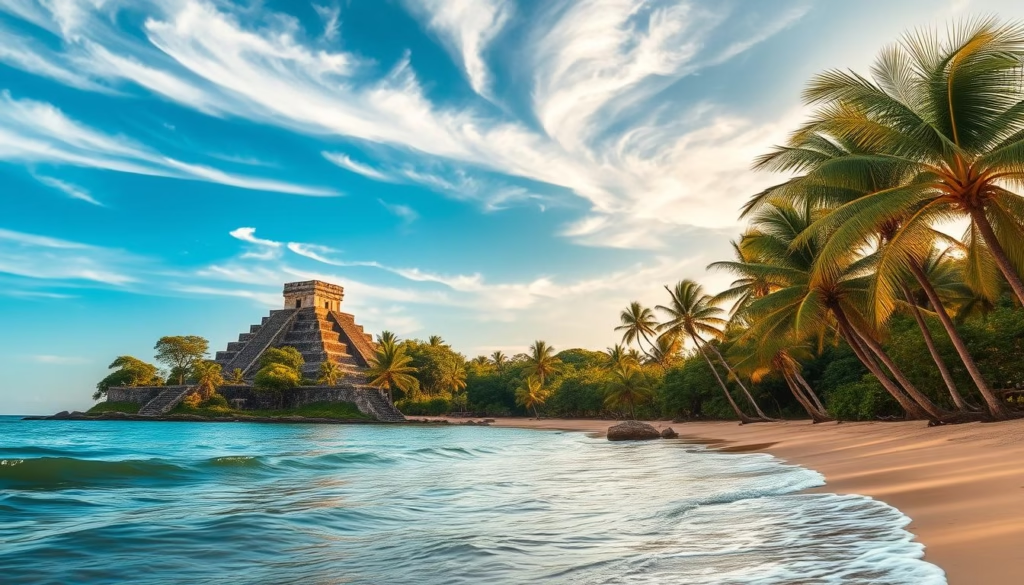
Why Mexico Remains a Top Travel Choice
Few destinations blend past and present so effortlessly. You can admire 1,500-year-old pyramids at sunrise and unwind at a boutique hotel by dusk. Locals proudly preserve traditions like Day of the Dead celebrations while embracing modern comforts travelers expect.
What truly sets this place apart? Its geographic variety. Within hours, you might transition from Pacific beaches to pine forests or colonial cities. This diversity means every trip feels fresh—whether it’s your first visit or fifth.
Highlights From Beaches to Ancient Ruins
Coastal gems like Tulum combine powdery sands with nearby ruins, letting you explore history between swims. Inland, markets burst with handwoven textiles and aromatic mole sauces, proving culture here isn’t just observed—it’s lived.
Adventurers love that Mexico rewards all types of trips. Spend your time snorkeling coral reefs one week and hiking volcano trails the next. With welcoming locals and reliable infrastructure, diving into these experiences feels effortless.
Exploring the Best Vacation Spots in Mexico
Mexico’s most beloved getaways began as humble villages or ambitious projects carved from jungle and sand. Some coastal gems grew organically from fishing communities, while others emerged as master-planned retreats designed for sunseekers. What unites them? Stunning landscapes paired with rich local character.
Along the coast, you’ll find stretches of beautiful beaches where soft sand meets water in every shade of blue. These areas balance natural beauty with modern comforts—think beachfront yoga studios beside family-run taco stands. For a deeper dive into regional highlights, explore these 16 must-visit gems.
| Destination Type | Key Features | Best For |
|---|---|---|
| Coastal Gems | Turquoise waters, coral reefs, seaside resorts | Snorkeling, relaxation |
| Inland Treasures | Colonial architecture, artisan markets, festivals | Cultural immersion |
Beyond the shore, historic towns preserve traditions through colorful facades and centuries-old recipes. Wander through markets selling handcrafted pottery or join a temazcal ceremony led by local healers. These experiences reveal layers of heritage often missed in busier areas.
Urban explorers thrive in the country’s vibrant city centers too. Picture cobblestone streets leading to rooftop bars with views of 17th-century cathedrals—a perfect blend of old and new.
Whether drawn to the rhythm of waves or the pulse of cultural hubs, visitors discover destinations shaped by both time and vision. Each place tells its own story through flavors, landscapes, and warm hospitality.
Caribbean Beaches and Snorkeling Adventures
The Caribbean coastline along Mexico’s Yucatán Peninsula dazzles with natural wonders both above and below the waterline. Here, powdery sands meet kaleidoscopic reefs teeming with marine life—a paradise for those seeking sunlit relaxation and underwater exploration.
Playa del Carmen’s Tropical Allure
Once a sleepy fishing village, Playa del Carmen now blends European charm with modern energy. Its palm-fringed beaches offer soft sand perfect for sunbathing, while the nearby Mesoamerican Reef invites snorkelers to swim alongside parrotfish and sea turtles.
What makes Playa del Carmen special? The town retains its laidback vibe despite rapid growth. You’ll find boutique hotels steps from family-run taco stands, creating an authentic yet comfortable experience.
Cozumel and Its World-Class Dive Sites
A 45-minute ferry ride from del Carmen lies Cozumel, where divers discover dramatic underwater cliffs and coral gardens. The island’s crystal-clear waters provide visibility up to 200 feet—ideal for spotting eagle rays and neon-colored angelfish.
Over 20 professional diving operators cater to all skill levels here. Beginners can explore shallow reefs, while advanced divers plunge into the famous Palancar Caves. Cozumel’s thriving marine ecosystem makes every dive feel like swimming through a living aquarium.
Cultural Hotspots and Colonial Cities
Step into Mexico’s living museums where history breathes through colonial buildings and traditional Mexican customs thrive. These urban treasures preserve artistic legacies while hosting vibrant community celebrations that turn streets into open-air festivals.
Oaxaca City’s Living Heritage
Oaxaca bursts with creativity at every corner. Artisans shape black pottery using techniques unchanged for generations, while chefs reinvent ancestral recipes like mole negro. The city transforms during Guelaguetza each July, when dancers in feathered headdresses parade beneath fireworks.
Late October brings Día de Muertos altars adorned with marigolds. Families gather in plazas to honor ancestors with candlelit processions—a powerful blend of joy and reverence.
Architectural Gems: San Miguel & Morelia
San Miguel de Allende stuns visitors with terracotta-hued facades draped in purple bougainvillea. Artists flock to its workshops, drawn by the creative energy flowing through cobblestone streets. Don’t miss the Fabrica La Aurora, a transformed textile mill housing galleries.
Morelia’s pink stone palaces showcase Spain’s architectural influence. The 17th-century aqueduct frames markets selling handmade guitars and vanilla-infused sweets. Both cities prove history isn’t just preserved here—it’s actively celebrated.
Ancient Ruins and UNESCO Treasures
History whispers through weathered stones across Mexico’s archaeological wonders. These sites bridge past and present, offering glimpses into civilizations that shaped art, science, and spirituality.
Chichen Itza and Mayan Wonders
Chichen Itza dominates Mexico’s eastern Yucatán Peninsula as a masterpiece of Mayan engineering. The iconic El Castillo pyramid aligns perfectly with equinox sunlight, casting serpent-shaped shadows. Visitors marvel at the Great Ball Court’s acoustics—a whisper travels 450 feet.
Don’t miss the Sacred Cenote, where ancient rituals unfolded. With entry at $35, this UNESCO site reveals astronomical precision in structures like the Observatory. Guides explain how carvings track Venus’s cycles.
Campeche’s Colonial Heritage
Sixteenth-century charm meets UNESCO protection in Campeche. Pastel-hued colonial buildings line streets once guarded by fortress walls. Baroque churches and Neoclassical mansions showcase Spanish influences adapted to tropical life.
Walk the restored ramparts at sunset for ocean views. Local museums display artifacts from pirate raids, blending history with coastal beauty.
| Feature | Chichen Itza | Campeche |
|---|---|---|
| UNESCO Listing | 1988 | 1999 |
| Key Highlight | Astronomical structures | Fortified architecture |
| Best Time to Visit | Morning hours | Late afternoon |
Both sites prove Mexico protects its layered past. From Mayan star charts to Spanish battlements, every stone tells a story.
Coastal Towns and Relaxed Seaside Vibes
Mexico’s coastal towns hum with authentic charm where fishermen mend nets at dawn and surfers chase afternoon swells. These hidden gems offer sun-drenched escapes without crowded resorts, letting visitors connect with local rhythms.
Puerto Escondido lives up to its “hidden port” name along Bahía Bay. Surfers flock to Playa Zicatela’s powerful waves, while quieter beaches invite lazy hammock days. The town splits naturally—locals reside in elevated neighborhoods, while the shore buzzes with seafood shacks and surf schools.
Further north, Mazatlán’s 11-mile golden coast blends relaxation with tradition. Stroll the Malecón boardwalk past bronze statues, then explore the historic center’s pastel buildings. Families here still gather in plazas for evening paletas, preserving routines unchanged by tourism.
Both destinations prove the best time to visit is whenever you crave salt-kissed air and genuine connections. These coastal hubs reward travelers who trade luxury resorts for weathered docks and stories shared over fresh-caught ceviche.
